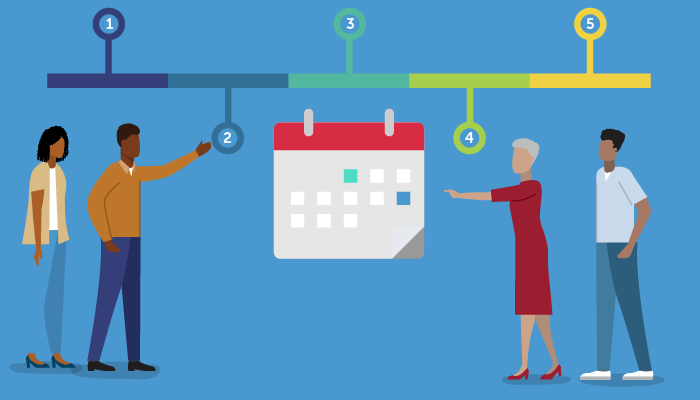
A cross-functional team is critical to ensuring all stakeholders are heard and contribute to your 1:1 device implementation’s success. Bringing personnel into the program after planning has started may hinder your team’s ability to get things done, as not all members may feel ownership of the program. Consider both district and school representation at all levels, including:
To start the planning process, identify a rollout director tasked with coordinating with all relevant parties, including scheduling regular meetings to coordinate, align, and debrief the event. Depending on the scale of the rollout—if it’s happening at one school or in parallel across many in the district—the rollout director may be a school- or district-level employee. The rollout director will ensure everything is in place for a successful rollout (see Rollout Readiness Checklist below).
Rollout is the culmination of months of work on the part of the district and school team (see Rollout Timeline below). You have been working with students on digital citizenship, teachers on leveraging tech in the classroom, and parents/guardians on understanding what always available access at home means. Though everyone is excited to get devices into the hands of students as quickly as possible, it is important not to rush the rollout; everyone involved needs to be ready to manage and use the devices. Readiness looks different for each group of stakeholders:
There must be accountability between all parties involved in order for a 1:1 program to be successful. It is a balance between coach, principal, and IT support, and each member of the team must know their role. Each campus must have complete buy-in to the 1:1 program for success.
To help build that buy-in, leverage teacher leaders and the student tech team or other student leaders as technology ambassadors. It is helpful to have one teacher from each content area on your campus serve on a team of “pioneers” or early technology adopters. These teachers are leaders who can incorporate digital tools into the content they teach in the classroom. The teacher leaders can model the use of technology and serve as curricular support when it comes to incorporating technology tools.
In addition, it is important to build support for students and teachers when the coach or technician is absent. Collaborate regularly to debrief issues that impact student learning. For example, if technical support notes that students are not bringing their devices to campus, the coach should work with teachers to make sure they are providing impactful lessons that require students to bring their devices to school.
Use existing site-based technicians to train new techs for supporting 1:1 programs in schools. Meet regularly to discuss troubleshooting tips, new information, and how to work together to manage and solve technical systemic issues. Internal chat threads are helpful for quick-fix problems and could serve as a beginning for documenting some of the issues that come with 1:1 devices and house possible solutions for new technicians. Provide targeted learning for the technical team and also consider a summer gathering with coaches and technicians to generate best solutions for student users.
District IT leaders should visit each school regularly to make sure everything is running as it should and assist the site-based technician in troubleshooting outlying issues. District IT leaders should also regularly meet with principals to learn about any end-user issues, talk through processes, and share best practices implemented by other principals in the district. It will be beneficial to build collaborative relationships between all principals and technical support staff so that the program becomes more sustainable with valid processes and procedures.
Let's connect and we'll send you the latest from Digital Promise.